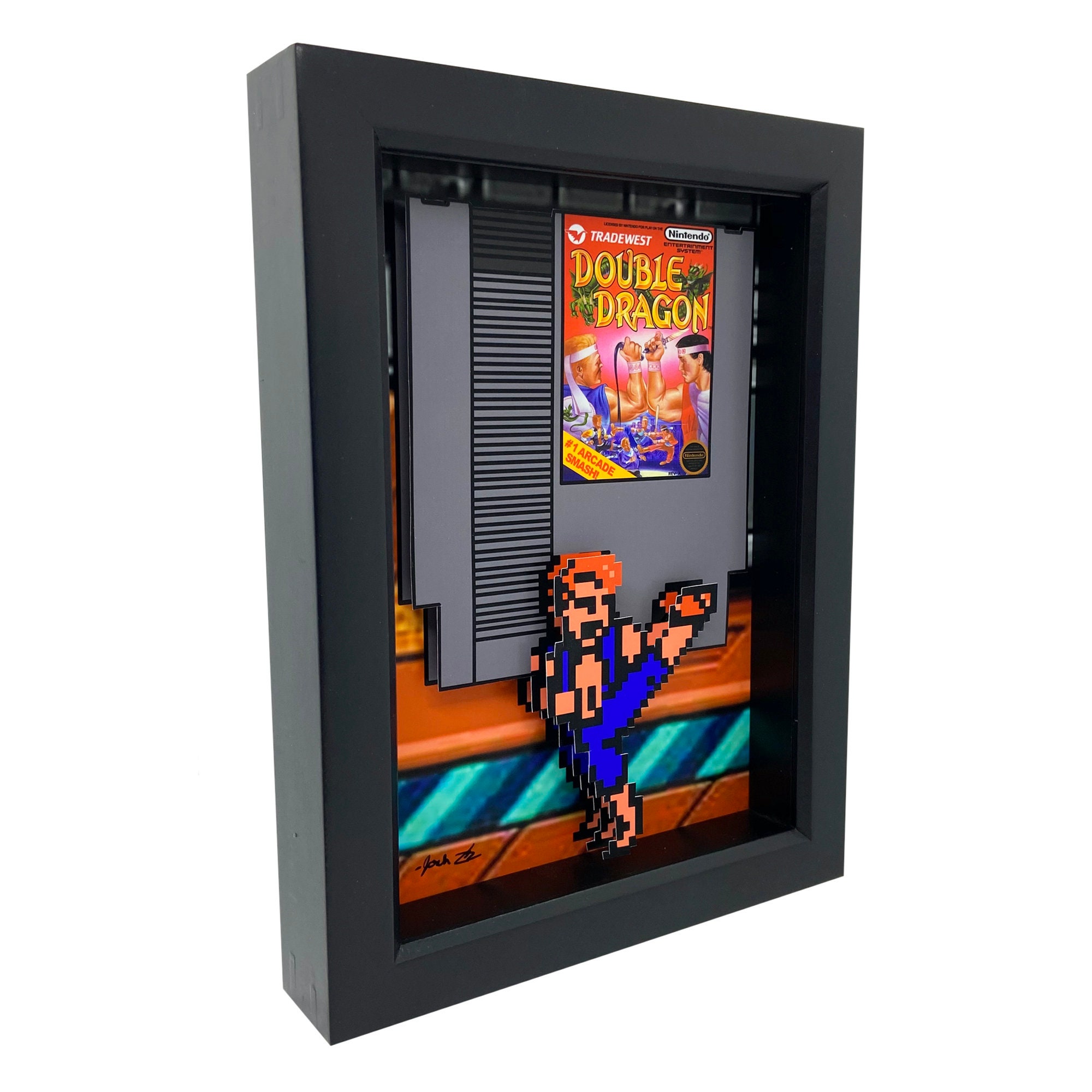
If the player manages to beat the entire game, beating the final boss will unlock two new characters, previously found in the arcade version of Double Dragon III. The game only grants players a single life (although in cooperative play, each player has two lives). Naturally, the game is incredibly difficult. Additionally, the final boss is no longer Cleopatra (in the arcade version), instead a possessed version of Marian named Queen Noiram.
_-_01.jpg)
The plot is similar, but rather than searching for the Rosetta Stones, Billy and Jimmy are searching for the Sacred Stones in order to rescue Marian, who has been kidnapped again. Very different from the arcade version of the game, Double Dragon III is similar to the other NES ports in the franchise. NES Version Double Dragon III on the NES only gives players a single life.ĭouble Dragon III: The Sacred Stones for the Nintendo Entertainment System was released in January of 1991 in North America by Acclaim Entertainment, Februin Japan, and was later published by Bandai in Europe. In the Japanese version of the game, all of these things are available before purchasing them in the shop, as that feature is absent from the Japanese version. The three extra character duos available in this mode are Urquidez, Chin, and Oyama (all three are pairs of brothers). The thing that was heavily criticized about this feature was the fact that it cost actual credits in order to purchase these, requiring players to insert in more coins if they want to buy items, new playable characters, or improved abilities (agility, health, etc). The shopĪ new feature in Double Dragon III are weapon stores, where players can buy new power-ups and abilities for the characters. Additionally, Double Dragon III removes many special moves, but adds its own, including a throwing move and a headbutt. Rather than featuring the directional based attacks of Double Dragon II: The Revenge, Double Dragon III uses the punch and kick buttons that were used in the first game. Double Dragon III returns to the gameplay format established in the first Double Dragon. Similar to previous Double Dragon games, Double Dragon III: The Rosetta Stone is a side-scrolling 2D beat-em-up. Thus, Billy and Jimmy set out on their quest to recover the three Rosetta Stones. Hiruko tells them that they must fight a mysterious enemy stationed in Egypt, and in order to do so they must first collect all three of the Rosetta Stones. In this game, they are returning home after a vacation, and encounter a fortune teller, whose name is Hiruko. Titled Double Dragon III: The Rosetta Stone in the arcade, this game once again follows Billy and Jimmy Lee, the series' stars.

Gameplay Arcade Version Hiruko, the fortune teller that the brothers meet. Double Dragon III / The Combatribes Soundtrack Included on the soundtrack are several of the original songs, as well as some arranged versions of the songs. Distributed by Pony Canyon, the soundtrack for Double Dragon III is actually a compilation of Double Dragon III's soundtrack and The Combatribes soundtrack, with twelve tracks from the arcade version of Double Dragon III. The soundtrack for Double Dragon III: The Rosetta Stone was released in Japan on June 21, 1991. Despite this, the NES version received mostly positive reviews, due to the more direct attention from Technōs Japan Corp. Typically regarded as one of the worst games in the franchise, Double Dragon III: The Rosetta Stone is often criticized for its shop system, unnecessarily difficult bosses, and lowered graphical quality. Developed by East Technology and published by Technos Japan Corp., Double Dragon III: The Rosetta Stone has since been released on a wide variety of platforms, with numerous differences between ports. Originally released for Japanese arcades in 1991, Double Dragon III: The Rosetta Stone - also known as Double Dragon III: The Sacred Stones - is the third game in the Double Dragon franchise. Note that if you plan on importing, an AC adapter for the mini console is sold separately.Overview The NES version of Double Dragon III is considered by fans and critics to be the best. The list of Famicom titles included with the Nintendo Classic Mini Family Computer differs from its North American counterpart, trading titles like Punch-Out!!, Kid Icarus and Castlevania 2: Simon’s Quest for Japan-only fare like Atlantis no Nazo, Downtown Nekketsu Kōshinkyoku Soreyuke Daiundōkai and sumo wrestling game Tsuppari Oozumou. Just like the mini NES Classic Edition, Nintendo’s mini Famicom will come packed with 30 pre-installed games. 10, and will retail for 5,980 yen (about $60). The Nintendo Classic Mini Family Computer will hit Japan on Nov. The day before Nintendo of America releases its miniaturized version of the Nintendo Entertainment System, known as the NES Classic Edition, Nintendo of Japan will release a tiny retro console of its own.


 0 kommentar(er)
0 kommentar(er)
